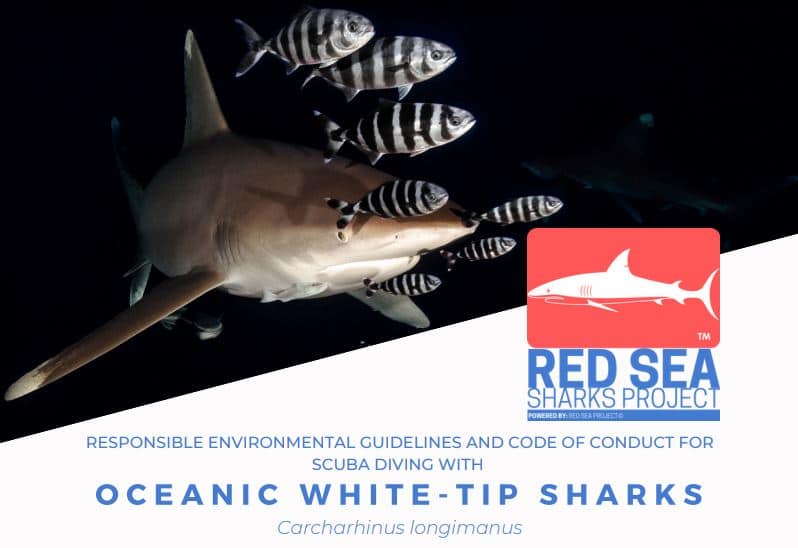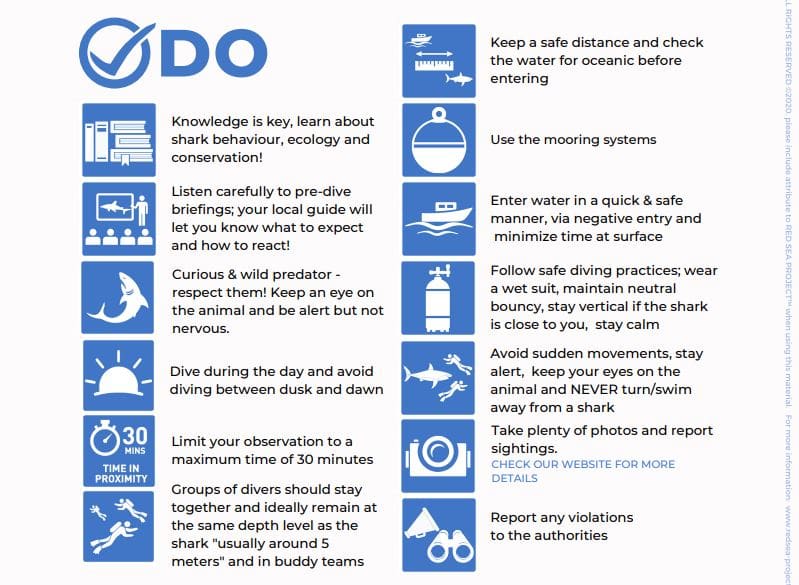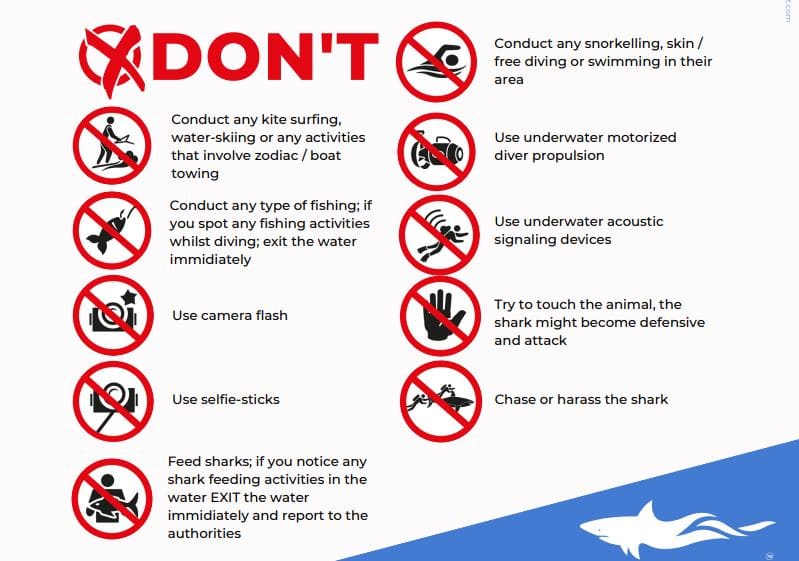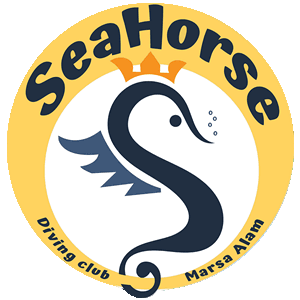Interaction with Marine Wildlife

We should keep in mind that – except if you are a mermaid maybe – the sea is not our world. We are privileged visitors to the underwater realm and should conduct ourselves accordingly, following a certain etiquette.
The basic rules for any kind of wildlife encounters are:
- Keep your distance;
- Never touch, handle or ride marine wildlife;
- Do not feed or attract marine wildlife;
- Never chase or harass wildlife;
- Stay away from wildlife that appears abandoned or sick.
Whichever the species and context, the best way to behave when in presence of marine wildlife is passive interaction: the most enjoyable and fulfilling wildlife experience is the one where animals interact on their own terms!
Here are some specific guidelines on how to responsibly interact with some marine animals you are likely to spot in the South Red Sea:
Code of conduct for dolphin encounters
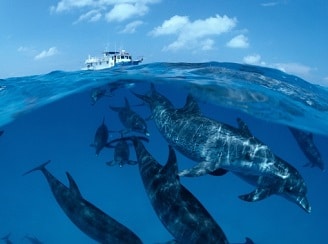
In order to avoid dolphin harassment from irresponsible human activities, HEPCA[i] produced a code of conduct for dolphin encounters that is now mandatory. Be aware that the non-respect of the code of conduct will be punished with a fine of 10,000 EGP.
Please follow these guidelines and ensure that your actions do not cause any change in their behaviour and be especially aware of the presence of mothers and calves.
Remember that dolphins use certain areas like Shaab Samadai and Shaab Satayah mainly to rest, so activities that disrupt their sleep should be avoided for the wellbeing of these wild animals.
Code of Conduct for swimmers
- Always wear fins, mask, snorkel and a life-jacket
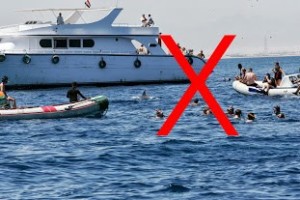
- Enter gently into the water, without jump or excessive splashes
- Once in the water, always keep quiet and swim gently using your fins only
- Always swim on the side of the group (parallel) and never dive down from top
- DO NOT chase dolphins. Let them approach and decide how to interact
- The use of scooters while swimming close to dolphins is strictly forbidden

- Avoid any loud noises (in particular shouts and whistle). Dolphins have a highly developed hearing system that allows them to communicate up to ten times better than humans do. Therefore, high noise intensity hurts them
- Remember that touching dolphins is STRICTLY FORBIDDEN. The risk of exchanging diseases is very likely
- NEVER throw trash in the water
- NEVER feed the animals
[i] HEPCA (Hurghada Environmental Protection and Conservation Association) is the main NGO working towards the protection and conservation of the natural resources in the Red Sea Governorate – http://www.hepca.org/
Code of conduct for dolphin encounters
Dolphins are certainly one of the highlights that attract more and more tourists to Marsa Alam.
In order to avoid dolphin harassment from irresponsible human activities, HEPCA[i] produced a code of conduct for dolphin encounters that is now mandatory. Be aware that the non-respect of the code of conduct will be punished with a fine of 10,000 EGP.
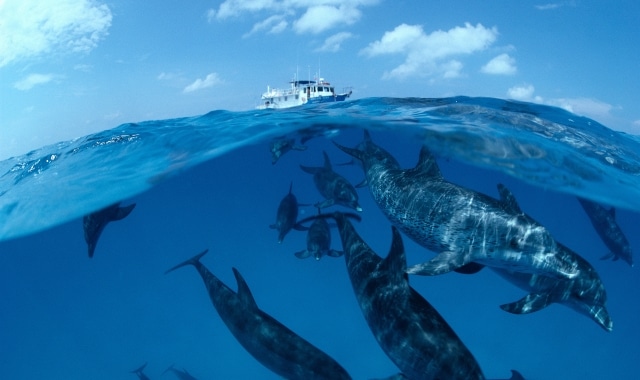
Please follow these guidelines and ensure that your actions do not cause any change in their behaviour and be especially aware of the presence of mothers and calves.
Remember that dolphins use certain areas like Shaab Samadai and Shaab Satayah mainly to rest, so activities that disrupt their sleep should be avoided for the wellbeing of these wild animals.
Code of Conduct for swimmers
- Always wear fins, mask, snorkel and a life-jacket
- Enter gently into the water, without jump or excessive splashes
- Once in the water, always keep quiet and swim gently using your fins only
- Always swim on the side of the group (parallel) and never dive down from top
- DO NOT chase dolphins. Let them approach and decide how to interact

- The use of scooters while swimming close to dolphins is strictly forbidden
- Avoid any loud noises (in particular shouts and whistle). Dolphins have a highly developed hearing system that allows them to communicate up to ten times better than humans do. Therefore, high noise intensity hurts them
- Remember that touching dolphins is STRICTLY FORBIDDEN. The risk of exchanging diseases is very likely
- NEVER throw trash in the water
- NEVER feed the animals

[i] HEPCA (Hurghada Environmental Protection and Conservation Association) is the main NGO working towards the protection and conservation of the natural resources in the Red Sea Governorate – http://www.hepca.org/
Code of conduct for marine turtle watching
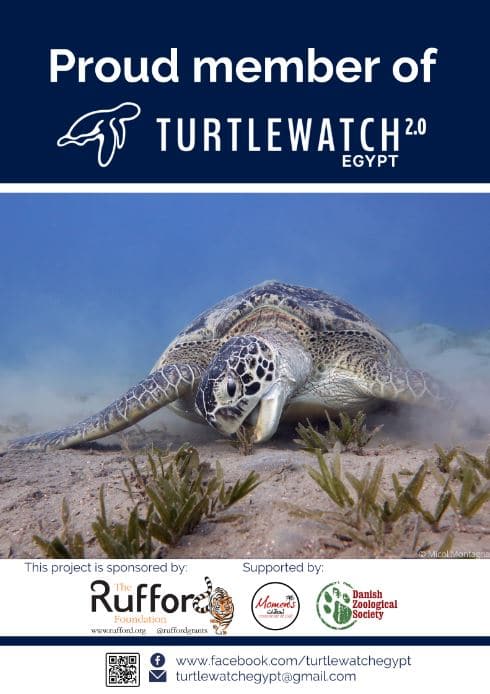
Here are TURTLEWATCH Egypt’s recommendations if you meet a marine turtle during your diving/snorkeling trip:
Code of Conduct for snorkelers and divers
- Never touch a turtle
- Never feed a turtle
- Keep a slow pace and keep at least 2-3m distance
- Only approach them slowly from behind or from one side if you have to, swimming parallel to the animal
- Do not swim directly above a turtle as this could inhibit the turtle’s ability to surface and breath
- If the turtle is moving away, let it go!
Code of conduct for marine turtle watching
The SeaHorse Diving Club is a proud member of TURTLEWATCH Egypt, a citizen science programme aimed at collecting data on endangered marine turtles in the Egyptian Red Sea, to further improve their conservation and protection.

Here are TURTLEWATCH Egypt’s recommendations if you meet a marine turtle during your diving/snorkeling trip:
Code of Conduct for snorkelers and divers
- Never touch a turtle
- Never feed a turtle
- Keep a slow pace and keep at least 2-3m distance
- Only approach them slowly from behind or from one side if you have to, swimming parallel to the animal
- Do not swim directly above a turtle as this could inhibit the turtle’s ability to surface and breath
- If the turtle is moving away, let it go!
Code of conduct for interacting with the dugong
Dugongs are ordinarily very shy and will allow themselves to be observed from a distance but move away if disturbed. When approached patiently and cautiously, they have shown to be quite inquisitive.
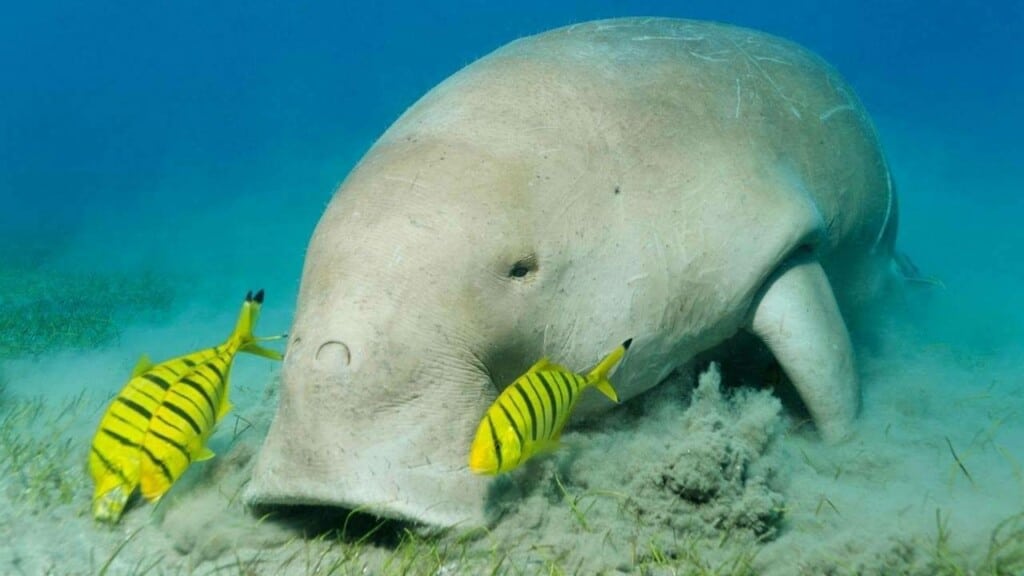
Code of Conduct for snorkelers and divers
-
Keep still and quiet, observe the animal silently: calm fin use, no jumping from the boat, no shouting, no sudden or abrupt movements, etc.
-
Maintain a few-meter distance at all times from the animal(s)
-
Never ever touch the animal(s); it can cause great stress and transmit diseases
-
Do not chase the animal(s). If it displays avoidant and/or distressed behaviors such as trying to swim away, stop swimming towards them
-
Do not swim in front of the animal(s), especially if they are on their way to the surface. Remember that dugongs are marine mammal and thus have to regularly surface to breathe
-
When swimming with dugongs, limit encounters to 15 minutes
-
Watch your fins and buoyancy when close to the bottom to avoid stirring up the sand. It can damage seagrass beds
-
Special guidelines for photographers: as long as they don’t feel disturbed, dugongs will keep munching on seagrass and provide great photo shots. Once you’ve find them, let them get used to your presence – you will have time to take your photos -, don’t chase them
Code of conduct for scuba diving with sharks
More than 40 different species of sharks have already been identified as inhabiting the Red Sea. Among these species, the oceanic white-tip shark is one of the most abundant in the South Red Sea, and certainly the most commonly spotted by divers in Elphinstone – Marsa Alam’s emblematic offshore dive site.
This solitary, large-bodied pelagic, recognizable by the mottled white markings on their long rounded fins, can occasionally closely approach divers underwater. All divers need to be prepared for these potentially close encounters with detailed briefings and information, including the behavioural guidelines they need to follow to keep these encounters safe and enjoyable.
For this purpose, RED SEA PROJECT™, a non-profit organization dedicated to the protection and conservation of marine ecosystems and biodiversity in the Red Sea, has produced a great infographic:
